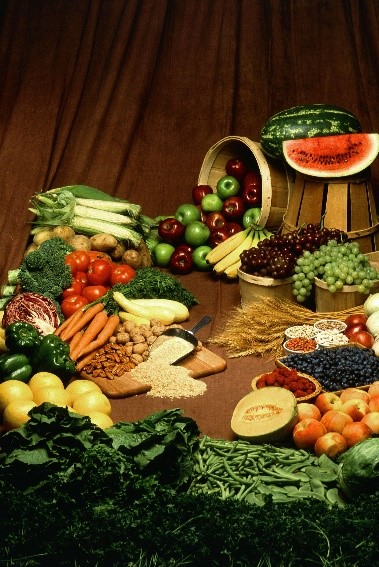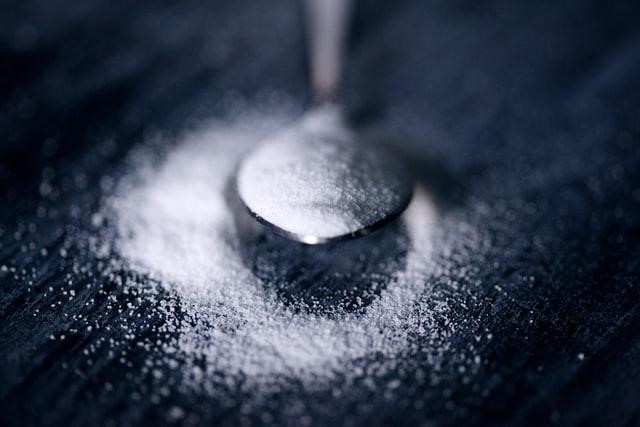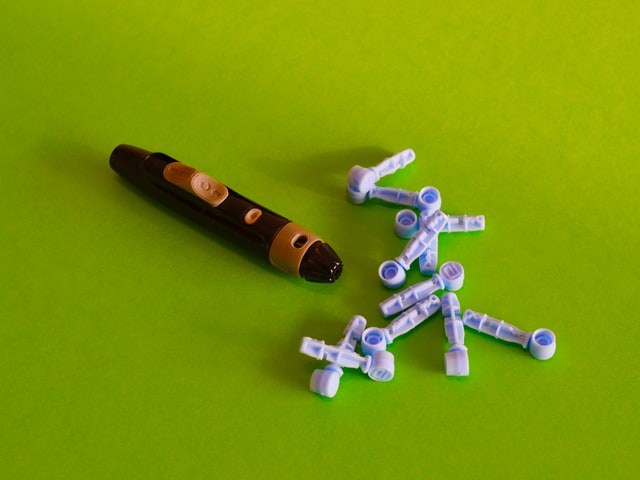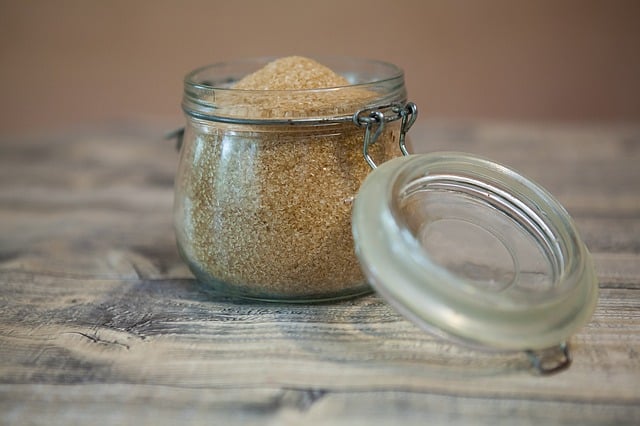In our series “Diabetes Mistakes,” using the glycemic index is an important tool to help you get good carbohydrates and keep your blood sugar at a stable level without spiking. If you have been told you are either prediabetes or have Type 2 diabetes, it is a common thought that you need to take it easy with carbohydrates. Well, yes and no. There are “good carbs” and there are “bad carbs” but they aren’t all off-limits. It is about learning to portion them properly to avoid raising your blood sugar levels too high. This article will help you understand more about using the glycemic index and enjoying more of the foods you love!
Solving Diabetes Mistakes: Using The Glycemic Index

The Glycemic index scale was created by a professor of nutrition in the 1980’s. He took people into the lab and fed them certain foods, then checked their blood sugar levels at certain times. What he found was that some carbohydrates like white bread spiked the blood sugar even higher than a bowl of ice cream.
He then assigned numbers to the scale, with 100 being the number for pure glucose and the highest number on the scale. It runs from 1 to 100 and as he tested certain foods on people he assigned a number to that food.
Over the years, studies into how the glycemic load of foods shows that it is the fiber content of foods that slows this, “burn.” If you eat a low fiber, low quality carbohydrate it will burn up quickly and spike your blood sugar levels. This is usually foods that are 70 or above on the Index. If you eat a high fiber food, like oatmeal, it burns up slower and has a lower blood sugar spike. Oatmeal is a 55 out of 100. Let’s take a look at how the index works.
For more information I suggest these links:
How The Glycemic Index Chart Works
The Glycemic Index is one way of solving diabetes mistakes, because you can eat carbs and stay healthy. Giving your body the right complex carbohydrates allows your body to have needed nutrients without throwing your blood sugar through the roof! The index works like this:
Low Glycemic Index Foods – 55 or less on the index (Little effect on blood sugar spikes)
Moderate Glycemic Index Foods – 56 to 69 (May give slight blood sugar spikes)
High Glycemic Index Foods – 70 or higher (May cause high spiking of blood sugar levels)
The lists below will help you see how some of the foods measure up. Keep in mind these are not points on your blood sugar scale. Each time you try a new food, make sure you check your blood sugar to make sure you don’t react differently to the food.
If you are interested in more articles read the following:
A word about portions: If you want something higher on the scale, just eat less of it. If you choose foods that are on the low end of the scale, you can eat more of these foods and fill up on them. Now, here is the part you’ve been waiting for.
Sample Glycemic Index Chart
| Fruit | Serving Size | Glycemic Index |
| Apple | 1 small or ½ medium | 40 |
| Apricots | 5 small | 34 |
| Banana | 1 medium | 51 |
| Cantaloupe | ⅔ cup | 65 |
| Cherries | ⅔ cup | 22 |
| Dates | ½ cup | 103 |
| Grapefruit | 1 small | 25 |
| Grapes | ⅔ cup | 59 |
| Kiwi | ⅔ cup | 53 |
| Mango | ⅔ cup | 51 |
| Orange | 1 small | 42 |
| Papaya | ⅔ cup | 59 |
| Peach | 1 small | 42 |
| Pear | 1 small | 38 |
| Raisins | ½ cup | 64 |
| Strawberries | ⅔ cup | 40 |
| Watermelon | ⅔ cup | 72 |
| Legumes | Serving Size | Glycemic Index |
| Black-eye Peas | ¾ cup | 42 |
| Butter Beans | ¾ cup | 31 |
| Chick Peas | ¾ cup | 28 |
| Kidney Beans | ¾ cup | 28 |
| Lentils | ¾ cup | 30 |
| Mung Beans | ¾ cup | 42 |
| Peas | ¾ cup | 22 |
| Pinto Beans | ¾ cup | 39 |
| Soy Beans | ¾ cup | 15 |
| Split Peas | ¾ cup | 32 |
| Vegetables | Serving Size | Glycemic Index |
| Asparagus | ⅔ cup | 8 |
| Baked Potato (Russet) | 1 small | 85 |
| Beets | ⅔ cup | 64 |
| Broccoli | ⅔ cup | 6 |
| Cabbage | ⅔ cup | 6 |
| Carrots | ⅔ cup | 47 |
| Corn | ⅔ cup | 54 |
| French Fries | ¾ cup | 75 |
| Green Peas | ⅔ cup | 48 |
| Mashed Potatoes | ¾ cup | 85 |
| Parsnips | ⅔ cup | 97 |
| Pumpkin | ⅔ cup | 75 |
| Spinach | ⅔ cup | 6 |
| Sweet Potatoes | ¾ cup | 61 |
| Tomatoes | ⅔ cup | 6 |
| Cereal | Serving Size | Glycemic Index |
| Bran | ½ cup | 50 |
| Coco Puffs | ½ cup | 80 |
| Corn Flakes | ½ cup | 77 |
| Fruit and Fiber | ½ cup | 61 |
| Muesli | ½ cup | 56 |
| Oatmeal | 2 cups | 55 |
| Beverages | Serving Size | Glycemic Index |
| Apple Juice | 1 cup | 39 |
| Carrot Juice | 1 cup | 43 |
| Coca Cola | 1 cup | 53 |
| Cranberry Juice | 1 cup | 56 |
| Fanta Soda | 1 cup | 68 |
| Fruit Punch (Real Fruit) | 1 cup | 67 |
| Lemonade | 1 cup | 54 |
| Orange Juice | 1 cup | 46 |
| Pepsi | 1 cup | 58 |
| Rice Milk | 1 cup | 92 |
| Smoothie | 1 cup | 30 |
| Tomato Juice | 1 cup | 23 |
| Bread | Serving Size | Glycemic Index |
| Bagel (Plain) | 1 small | 69 |
| Baguette | ½ small | 57 |
| Barley Bread | 2 slices | 57 |
| Gluten-Free Bread | 2 slices | 79 |
| Oat Bread | 2 slices | 65 |
| Rice Bread | 2 slices | 72 |
| Rye Bread | 2 slices | 50 |
| White Bread | 2 slices | 73 |
| Whole Wheat Bread | 2 slices | 71 |
| Whole Wheat Bread (Kernel) | 2 slices | 58 |
| Other Foods | Serving Size | Glycemic Index |
| Peanuts | 4 oz. | 14 |
| Pizza | 2 slices | 30 |
| Low-fat Yogurt | 1 cup | 33 |
| Spaghetti | 1 cup | 42 |
| Potato Chips | 4 oz. | 54 |
| Snickers Bar | 1 Regular size | 55 |
| Ice Cream | 1 cup | 61 |
| Macaroni and Cheese | 1 cup | 64 |
| White Rice | 1 cup | 64 |
| Popcorn | 2 cups | 72 |
One last note: Keep in mind that in different glycemic index tables the numbers may differ slightly. Also, check with your doctor before making any dietary changes. Eating from the glycemic index can be a very effective way to manage blood sugar levels and is one way of solving diabetes mistakes. Make sure you stick to the portions listed as larger portions tend to increase the “glycemic load” of the foods.
TheDiabetesCouncil Article | Reviewed by Dr. Christine Traxler MD on June 08, 2020
References:





